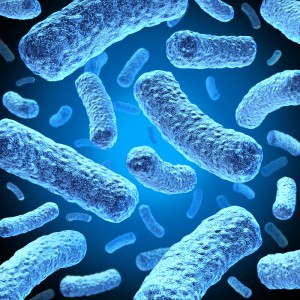[amzn_product_post]
Lamont Home Carter Family Size Wicker Laundry Hamper with Coordinating Padded Vinyl Lid, Chocolate
[amzn_product_post]
Pets love Natural Laundry Detergents, Too
[amzn_product_post]
Germy Laundry Can Make You Sick
Featured
You have just finished the laundry. But, are you confident that your laundry is truly clean?
According to Dr. Charles Gerba, “America’s Germ Guru”, the laundry room is full of dangerous germs. Gerba, an environmental microbiologist at the University of Arizona, has tested some American laundry rooms. Randomly swabbing the inside of washing machines, Gerba wanted to know how effective washing machines were at ACTUALLY cleaning germ-laden laundry. Was it a safe bet that soapy solutions, rinses and agitation were truly enough to conquer germs, bacteria and viruses?
The answer was a startling NO. Over 60% of the tested washing machines were positive for coliform bacteria —a sign of fecal contamination. Staph, was present in 20% of the machines. Underwear, sponges and dish cloths were identified as the primary source of contamination.
The second part of Gerba’s dirty laundry experiment involved the direct observation of how E.Coli, Salmonella and Mycobacterium Fortuitium would survive in a typical warm water wash setting and an average drying cycle.
Gerba’s results demonstrated that a warm wash cycle did NOT rinse away these germs. The laundered items and the washer basin were still infected by dangerous pathogens. More troubling was that subsequently laundered loads, also, showed signs of contamination.
Housekeeping manuals have long taught that a hot dryer cycle kill germs remaining after the wash cycle. However, Gerba demonstrated that as mainly myth. A hot dryer cycle did kill E.Coli remnants but Salmonella and the Mycobacterium Fortuitium remained. A 43 minute cotton setting and a 23 minute permanent press dryer setting was used — simulating two popular dryer options.
This study shows how unrealistic cold water washes are for certain laundry applications. Remember, the results were observed in warm water settings — cold water would be even less effective in killing germs. There have been increased environmental campaigns to get consumers to utilize cold water settings to preserve energy needs. This works on the garden-variety-dirty-laundry, but is dangerous and unhealthy to apply to all laundry needs. Underwear, towels, bed linens, cloth diapers, kitchen towels, cleaning rags and pet items all can harbor unhealthy bacteria, fungus, and viruses. Family members with colds or the influenza virus can contaminate clothing and linens. (For washing laundry infected by Norovirus read this article, here).
We commit to the chore of laundry, because we desire clothing and linens that are fresh and sanitary. Laundered items that still harbor germs pose a health threat. This danger is most pronounced to those with compromised immune systems, the pregnant, babies, and the elderly.
Here are practical safe laundry tips to reducing germs in laundered clothing and laundry appliances.
Hand Washing
Gerba wants consumers to avoid cross contamination in the laundry room. After sorting soiled laundry, loading dirty laundry into the washing machine, and removing washed laundry from the washer into the dryer —- your hands should be washed.
Underwear
The last load that you launder should be a solo load of underwear. Do not mix underwear in with other laundry items to reduce the transmission of E-Coli and other fecal bacteria. Gerba told Fox News “If you wash a load of undergarments, you transfer about 500 million E. coli bacteria to the machine.” He recommends using a hot water setting with color safe bleach to achieve a true healthy clean.
Towels, Bed Sheets and Kitchen Linens
Bath towels, bed linens and kitchen cloths all can harbor an assortment of germs so wash them frequently. These items should be washed in hot water and sanitized with a color-safe bleach — as label instructions warrant. Wash each of these groups of items separately. They should be fully dried before they are folded and put away. A complete hot dryer setting or full sun exposure when line drying will reduce residual germ proliferation.
Washing Machine Maintenance
Your washing machine needs to be routinely maintained. See our article on How to Clean A Washing Machine. Gerba recommends running an empty load with standard bleach once a month to rid washer of germs — calling the practice ” mouthwash for the machine”.
We hope these Safe Laundry Tips keep you and your family protected from laundry room germs. More information about germs in the laundry room can be found here .
Beautiful Banana Leaf Rectangular Laundry Clothes Hamper
[amzn_product_post]
A Petastic Pet Laundry Detergent 20 Oz.
Venus Laboratories Earth Friendly (Petastic) Ecos Pet Laundry Detergent 20 oz
A specially formulated laundry detergent for your pets clothing, linens, beds, etc. Free of essential oils, fabric softeners and optical brighteners, it is ideal for pets and their owners with skin sensitivities. Safe for your pet, for you and the environment.
Directions
For tough spots and stains, pour concentrate directly onto stain. Wash as usual. For full loads, fill dispensing cap. For smaller loads, adjust downward from line accordingly, or use approx. 1 ounce. Smaller loads will yield 20 wash loads. For front load machines, use half the amount of ECOS indicated above.
PURCHASE NOW Petastic- Ecos Pet Laundry Detergent 20 oz
Household Essentials Outdoor Clothesline T Post Pole, Steel
[amzn_product_post]
Homz/Seymour 12-121-09 Clothespin Bag- Colors May Vary
[amzn_product_post]
Crane Plumbing 100019 DL1 Drop-In Laundry Tub, White
[amzn_product_post]
Solid Teak Double Laundry Hamper
[amzn_product_post]


